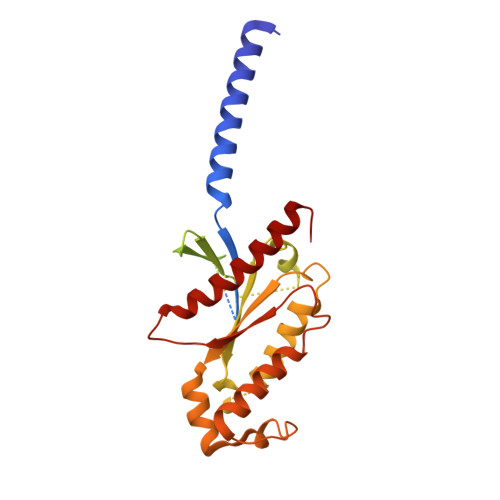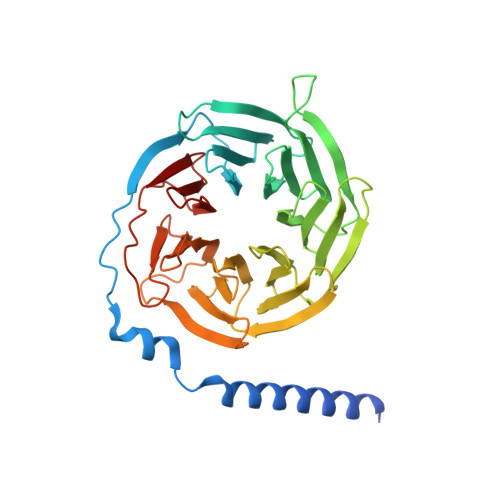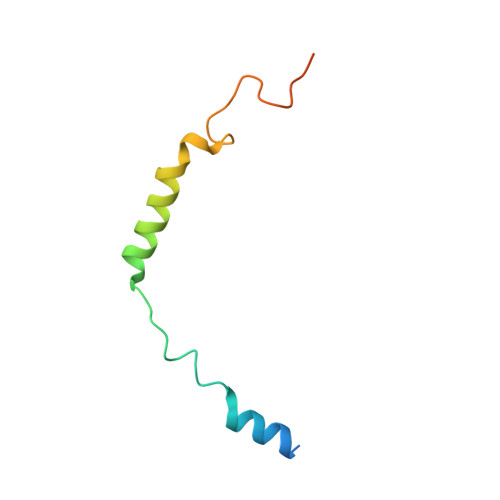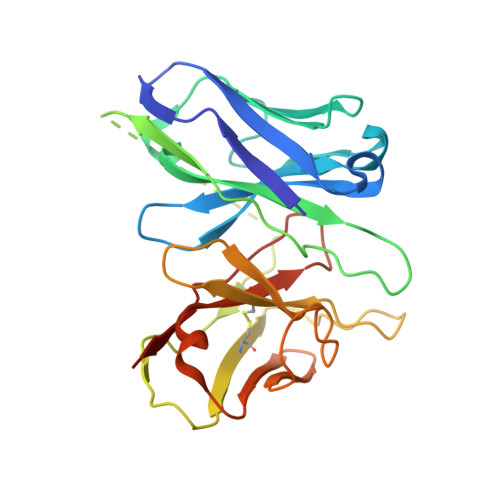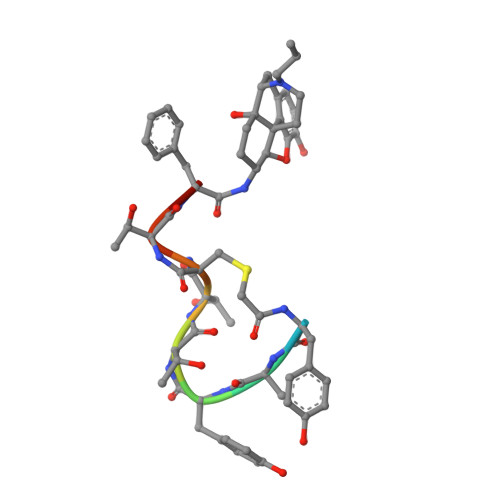Design and structural validation of peptide-drug conjugate ligands of the kappa-opioid receptor.
Muratspahic, E., Deibler, K., Han, J., Tomasevic, N., Jadhav, K.B., Olive-Marti, A.L., Hochrainer, N., Hellinger, R., Koehbach, J., Fay, J.F., Rahman, M.H., Hegazy, L., Craven, T.W., Varga, B.R., Bhardwaj, G., Appourchaux, K., Majumdar, S., Muttenthaler, M., Hosseinzadeh, P., Craik, D.J., Spetea, M., Che, T., Baker, D., Gruber, C.W.(2023) Nat Commun 14: 8064
- PubMed: 38052802
- DOI: https://doi.org/10.1038/s41467-023-43718-w
- Primary Citation of Related Structures:
8FEG - PubMed Abstract:
Despite the increasing number of GPCR structures and recent advances in peptide design, the development of efficient technologies allowing rational design of high-affinity peptide ligands for single GPCRs remains an unmet challenge. Here, we develop a computational approach for designing conjugates of lariat-shaped macrocyclized peptides and a small molecule opioid ligand. We demonstrate its feasibility by discovering chemical scaffolds for the kappa-opioid receptor (KOR) with desired pharmacological activities. The designed De Novo Cyclic Peptide (DNCP)-β-naloxamine (NalA) exhibit in vitro potent mixed KOR agonism/mu-opioid receptor (MOR) antagonism, nanomolar binding affinity, selectivity, and efficacy bias at KOR. Proof-of-concept in vivo efficacy studies demonstrate that DNCP-β-NalA(1) induces a potent KOR-mediated antinociception in male mice. The high-resolution cryo-EM structure (2.6 Å) of the DNCP-β-NalA-KOR-Gi1 complex and molecular dynamics simulations are harnessed to validate the computational design model. This reveals a network of residues in ECL2/3 and TM6/7 controlling the intrinsic efficacy of KOR. In general, our computational de novo platform overcomes extensive lead optimization encountered in ultra-large library docking and virtual small molecule screening campaigns and offers innovation for GPCR ligand discovery. This may drive the development of next-generation therapeutics for medical applications such as pain conditions.
- Center for Physiology and Pharmacology, Institute of Pharmacology, Medical University of Vienna, 1090, Vienna, Austria.
Organizational Affiliation:








